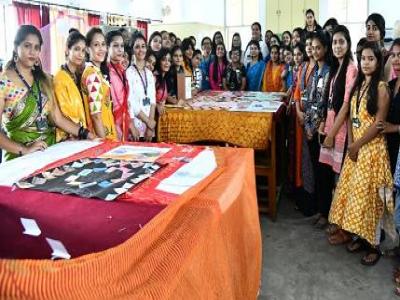National Handloom Day: Flaunt the warp and weft

IIS (deemed to be UNIVERSITY)
DEPARTMENT OF FASHION & TEXTILES
National Handloom Day: Flaunt the warp and weft
7th August, a day in memory of the ‘Swadeshi Movement’ of 1905, India weaves in to celebrate National Handloom Day as the country has been a hub of organic looms that serve as an employment scheme to the artisans and craftsmen who put in hours of labor to provide the finest of couture as an end product. Handlooms aren’t just important for aesthetic and cultural reasons, they’re also integral to political and diplomatic engagements, as they are symbols of a nation’s identity, culture and inclusive development. In the words of a French traveler, Tavernier, the Ambassador of the Shah of Persia (CE 1628–1641), on his return from India, presented his master with a “coconut shell, set with jewels, containing a Muslin turban thirty yards in length, so exquisitely fine that it could scarcely be felt by the touch.”
Celebrating such days brings awareness about our rich textiles and brings pride as a fashion designer to be able to use such looms and be a part of this movement. The awareness of our handloom in the country helps in the employment of our great artisans and weavers who got lost in the progress of the fashion industry in the past decade with the growth of mass production brands.
On 7th August 2018, Department of Fashion & Textiles celebrated National Handloom Day by urging students of the department to wear Handloom products as part of the #IWEARHANDLOOM campaign. Students of the department displayed products and delivered talks to young fashionistas to show millennials that handloom isn’t just for the oldies.
Students emphasized that in this age of fast fashion, aesthetics seems to have lost out. With mass manufacturing, no trend stays longer than a season and there are hardly any emotions attached to what one wears and how we present ourselves. Somewhere, with this thought, wearing handloom calms this roadrunner lifestyle, and also makes one feel proud and unique. It made them feel that in some way they are contributing to revivalism.
What is required is for Indian textiles to be adopted into contemporary wear, so that younger generations start understanding and supporting these fabrics, a goal which might not be impossible to achieve given the large number of brands which are today involved in the revival of these indigenous weaves.

